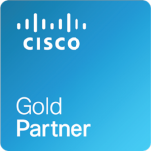
Datacenter
UCS
Where traditional UCS might be seen as a converged infrastructure, hyperconverged removes the need for a SAN, instead focusing on striping disk across multiple servers. In this fashion, all disk is available to all servers—in the same way a SAN would have presented it—but without the need to purchase or maintain a SAN. For folks using a traditional converged system, Hyperconverged presents a more resilient and typically less expensive alternative.
Hyperconverged
Where traditional UCS might be seen as a converged infrastructure, hyperconverged removes the need for a SAN, instead focusing on striping disk across multiple servers. In this fashion, all disk is available to all servers—in the same way a SAN would have presented it—but without the need to purchase or maintain a SAN. For folks using a traditional converged system, Hyperconverged presents a more resilient and typically less expensive alternative.

Ready to upgrade?
Crossconnect sells and supports Hyperconverged offerings from both Cisco (Hyperflex) and VMWare (VSAN).
VMWare Virtualization
Crossconnect employs multiple VCPs, and has a mature VMWare Virtualization practice. Unique to Crossconnect’s practice is its experience with implementing ESXi with DevOps and SDN applications. Crossconnect has written and deployed production PowerCLI and Ansible integrations; as well as ACI and vCenter integrations.
Microsoft Server Infrastructure
Crossconnect supports infrastructure down through the server operating system, with a professional and managed service practice in the Microsoft Server space. We support on-premise, cloud and hybrid cloud implementations of Active Directory, Exchange, Sharepoint, and most other common Microsoft Server products. In the cloud space, let Crossconnect provide MDM services through Microsoft Intune.
F5 Load Balancing & Security
Crossconnect is an authorized F5 partner, with many years’ experience in load balancing and Web Application Firewall (WAF) experience.
Ansible Automation
In addition to having on-staff programmers versed in many programming languages that can write directly to application APIs, Crossconnect has an Ansible practice for playbook automation.
Software Defined Networking
Fabric/SDN – Cisco Application Centric Infrastructure (ACI)
ACI is Cisco’s Data Center SDN solution, and the likely future replacement of the current data center infrastructure install base worldwide. ACI empowers admins to fine-tune automation in datacenters small and large. ACI simplifies datacenter networking by removing the complexity of manually setting up a network environment.
Traditionally, different Nexus switches installed in the same environment had to be configured one-by-one. Since ACI treats all configured devices as a single entity, admins can configure them all at the same time through the Cisco Application Policy Infrastructure Controller (APIC). This saves time and money.
ACI delivers functionality through an application-oriented platform. Rather than being bound to VLANs, subnets, routing, and trunks, ACI uses a spine-leaf topology that is both simple and scalable. Crossconnect was an early adopter of ACI, earning the ATP specialization to provide ACI before it was available to the general partner base. We know ACI, and would love to talk with you about how it could transform your business.
VMWare NSX
As the importance of data to every enterprise grows and the threats to that data grow as well, there becomes a need to build data centers in a secure and scalable fashion. VMWare’s NSX system provides a ready-made product that can serve as a foundation for this secure and scalable datacenter. NSX delivers these capabilities with a distributed, application aware firewall, network automation, and overlay networking, all software based and independent from traditional networking hardware.
Segmentation and Automation
One of NSX’s core capabilities is data center segmentation. NSX delivers segmentation through the use of overlay networking (keep groups of servers in the same subnet regardless of physical location) and distributed security and firewalling features (every host gets a firewall built into the hypervisor’s networking stack). And, since manually reconfiguring overlays and firewall policies every time a VM moves would be challenging, NSX can move these policies along with the VM whenever a VM move needs to happen.
Datacenter in a Box
NSX’s built-in security and segmentation enables something very interesting: The ability to deploy a 100% virtual datacenter, including all edge network functions (switches are still required). In the past, doing this would have been possible yet foolhardy, as introducing Internet traffic right into your stack of servers would create a security hazard. Now, though, with NSX’s segmentation and security features as well as a well-developed suite of virtual network functions from VMWare and all the major networking vendors, this can be done safely and effectively.
Have an environment with KVM based virtualization, containers, or bare metal hardware (or a mix of everything)? Want to extend NSX to your public cloud instances? NSX-T, the latest evolution of NSX, no longer relies on vSphere and is now an independent, standalone product.

